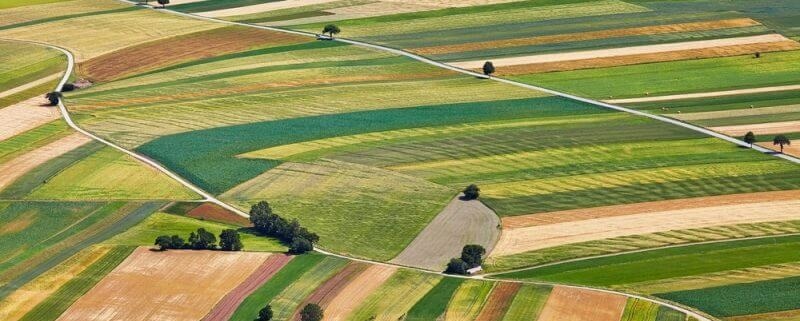The Common Agricultural Policy of the European Union (CAP) is one of the most important policies, representing a partnership between agriculture and society. It aims to support farmers, improve agricultural productivity, ensure constant food supply, provide farmers with adequate income, maintain the rural landscape in the EU, and help cope with climate change. It was launched back in 1962 and designed as one of the first common politics of the European Union. The first draft of the new CAP reform was introduced by the European Commission on June 1st, 2018 but, due to the CAP’s direct dependence on the new multi-annual financial framework, no further negotiations were launched until July 2020 when the EU leaders at the European Council agreed on a new 2021-2027 budget.
A fact we must be aware of is the agricultural reform is that of an extremely complex policy, consuming a large part of the EU budget, as it directly concerns a large portion of the population but also indirectly every individual EU citizen. The complexity in which the reform frames itself reflects also in the fact that we had to discuss three legislative resolutions in the European Parliament: the first was regarding the rules on support for strategic plans prepared by state members; the second, about financing, management, and monitoring the CAP; the third, about establishing a common organization of the agricultural products markets. At the beginning of the debate, we saw numerous criticisms from NGOs and environmental activists, who accused the commission’s proposal of obsolescence, non-compliance with the objectives of the European Green Deal (EGD), and even that adopting such a kind of reform is a ‘kiss of death’ to our common fight against climate change. It is true that the first proposal, which was presented in 2018, was not ambitious enough in terms of worrying about the environment and tackling climate change, we, the MEPs also acknowledged that. So, a massive of 1941 amendments were collectively filed with the existing resolutions. I supported a number of amendments that would make the CAP more in line with the EGD and set higher targets for reducing pesticide use and protecting biodiversity. Unfortunately, not all have been accepted, but I believe that this reform brings the greatest paradigmatic change since the introduction of the environmental dimension into the farm subsidy scheme.
Despite numerous complaints and lobbying pressures by some environmental activists, all three legislative resolutions were adopted by a large majority at this year’s second European Parliament plenary session, in October. The compromise texts cover a number of amendments, but I will mention just the most important ones. So-called eco-schemes will be introduced. These are mechanisms to encourage more environmentally friendly agricultural practices; as a new way of financing those farms that will focus on environmental and climate protection. Eco-schemes will receive 30% of direct funding from the first pillar of the CAP budget and will be binding on Member States, while farms will have to meet economic targets whilst increasing green spending from 30% to 35% of the rural development budget. Member States will now also have to include detailed agricultural objectives in the preparation of their national strategic plans, which will have to be in line with EU priorities. In addition, we have also agreed that the European Commission can comment and make recommendations or even introduce changes when reviewing the prepared national strategic plans, given that the prepared plans do not make sufficient efforts to harmonize the CAP with the adopted objectives of the EGD. According to the provided information the Commission is expected to continue its plans on the European Climate Law in the coming year, to which the CAP Strategic Plans will have to respond, as countries will be responsible for achieving the objectives of both important pieces of legislation and their inter-linkages. The reform also allows 15% of the funds from the first pillar to be transferred to the second pillar, as long as the funds are aimed for climate and environmental objectives. Member States will have to earmark at least 30% for rural development and a total of 40% (with all the above) to tackle climate change. The reform also includes a concern to create better conditions for young farmers and smaller farms, the aim of which is to reduce pesticide use and create better working conditions for those working in the sector.
Regarding the financing; I do regret that in the report on financing, governance, and monitoring an amendment has been adopted which introduces a hybrid model into the reform that will reduce flexibility, increase the administrative burden, will not improve supervision, and will also not penalize failure. I have advocated the adoption of a performance-based delivery model that would provide all Member States with an opportunity, within the nine key objectives, of a common set of indicators and the approval of the plans by Member States and the Commission, while ensuring the continuation of full control of all expenditure in line with the EU Financial Regulation. This would be done through performance-based reporting and monitoring to promote the actual use of ecosystems, and the achievement of the higher climate change and environmental ambitions of the Green Deal while reducing access to finance for simple land ownership.
This reform also adopts the Nutri-score system for labelling the nutritional value of products, their origin, and production method, which will now also apply to bottled wines. Whereas, the debate on the possibility of banning the use of the terminology burger, sausage, milk, yogurt, butter and cheese for plant-based products has caused quite a stir when labelling and naming food. The controversial nature of the debate stems from the view that this terminology is only intended for products of animal origin. I think it is pointless to change terms that have been used for decades. While the ban was not accepted by the majority, an amendment was adopted that will restrict the use of terms for plant-based dairy substitutes, which will have to use alternatives such as “cheese substitute” or “yogurt product”.
To achieve a level of sustainable, regenerative farming and to strive towards climate neutrality targets, the CAP reform also introduces the concept of so-called “carbon farming”, which we have already seen in the Climate Change Act. It is the use of CO2 emissions during the restoration of degraded agricultural land, the top layer of which contains around 14 billion tonnes of carbon in the EU. The use of soil carbon has a positive effect on the recovery of organic matter in arable soils by increasing the soil’s bio-fertility, which means that crops grown on such soils can act as “sinks” for CO2, removing around 51 billion tonnes of CO2 from the atmosphere each year and storing it in the topsoil. If successful, it will have a significant impact on environmental protection, but many scientists still believe that reducing livestock farming, which accounts for 10% of all emissions in Europe, will be key to reducing CO2 emissions in the future.
I would have liked to see the adopted agricultural reform to be more ambitious in terms of environmental protection, and the drive to achieve the Green Deal objectives, but the reform does include targets that will help achieve carbon neutrality by 2050. It should also be considered that the adoption of legislative resolutions by Parliament does not mean that the procedure is complete or that the text is final. According to many experts’estimations we are only half way there. The legislative resolutions texts are merely the starting points of the European Parliament for trialogues – further negotiations with the representatives of the European Commission and the Council, where they will have to adopt a new, final text by consensus. Negotiations are a protracted process, and the last CAP reform involved 56 meetings over 18 months. According to senior diplomats, the first negotiations are expected to start this time as early as the end of November.
Although there is no legislative guarantee in the CAP reform to align policies with the adopted EGD objectives and the Biodiversity Strategy, they are not mutually exclusive but go hand in hand. Agricultural activity is directly dependent on environmental protection, biodiversity conservation, and access to water. The fact is, if we do not ensure quality conditions for pollinators, reduce the use of pesticides, and reduce emissions we will reach a point where farming will no longer be possible, the CAP will be irrelevant, and we will be left without vital food production. I am confident that by realizing these facts we will take a step in the right direction – not only EU policy but also all farmers, business people, and citizens, each in their capacity to reduce the negative impact on the environment because taking care of the environment means fighting for a better tomorrow.
Foto: Shutterstock





Leave a Reply
Want to join the discussion?Feel free to contribute!